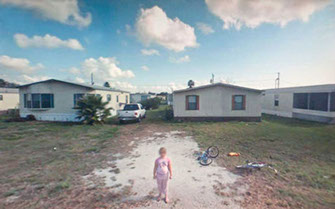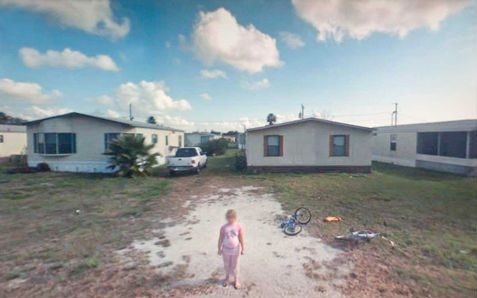"I LIE TO PEOPLE ABOUT THE TOWN I'M FROM IN FEAR THAT PEOPLE WILL RECOGNIZE IT AND KNOW THAT IT'S ACTUALLY A REALLY WEALTHY COMMUNITY."
Skidmore College Student
back to top
Growing up in Saratoga, the discrimination we did have, it was class. It was based on your socioeconomic status, was what it was. I knew a lot of people in high school, but many of them I didn't, because I didn't fit in. I didn't have a Swatch watch or drive or a Corvette or a BMW to school every day. And that's what it was like, growing up here in Saratoga. Everything was based on, where you lived and how much money your parents had. And I don't know, I think class was the only discrimination that I realized as a child growing up.
Classless Society Stories Project
Everybody was mostly shift workers - you know, three to elevens or eleven to sevens and your seven to threes. And that's just how we grew up. We really didn't know things to be much different from that in the real world.
Classless Society Stories Project
I'm forty-three, I'm white, and I live in Saratoga Springs. And currently, class plays a significant role in my life and I think about it and am reminded of it in circumstances. Not on an everyday basis, but it's definitely part of my background, mainly because I'm struggling right now to make ends meet because I think that my economic status makes me socially isolated and prevents me from doing some of the things that would ordinarily open up my world, really, and my universe.
Classless Society Stories Project
GROWING UP IN SARATOGA, THE DISCRIMINATION WE DID HAVE, IT WAS CLASS...
CLICK TO READ
EVERYBODY WAS MOSTLY SHIFT WORKERS...
CLICK TO READ
I'M FORTY-THREE, I'M WHITE, AND I LIVE IN SARATOGA SPRINGS, AND CURRENTLY, CLASS PLAYS A SIGNIFICANT ROLE IN MY LIFE...
CLICK TO READ
CLICK TO PLAY AUDIO
WE GREW UP IN A TRAILER PARK...
(0:28 min)
I DON'T WANT TO BECOME HOUSE POOR, I DON'T WANT A BIG MCMANSION...
(0:52 min)
CLICK TO PLAY AUDIO
back to top
-
URBAN VERSUS RURAL
Many imagine poverty as concentrated in crowded urban areas, believing that inner cities contain the highest percentage of the lower and working classes. In fact, the largest percentage of America's poor live outside cities, in non-metropolitan and rural areas. In 2002, more than 14% of the rural population lived under the poverty line, compared with 12% of the urban population. Over time, these discrepancies have increased. Poverty in the suburbs of the country's largest metropolitan areas grew 25% between 2000 and 2008 - almost five times faster than in the cities. As cities continue to gentrify, people in the working and lower classes, struggling to keep up, are pushed out beyond city limits, where housing may be less expensive.
Regionally, the largest poverty rate increases between 2000 and 2010 occurred in the midwest, while the highest percentage of people at or below the poverty line live in the south and the midwest.
The geographical distribution of jobs and industries in cities and rural areas also affects poverty. Automobile-manufacturing metropolitan areas such as Grand Rapids, Michigan, and Youngstown, Ohio, are among the hardest hit. In the last decade, poverty rates climbed 3.0% and 2.2%, respectively, in these two midwestern cities. At the same time, however, northeastern cities saw poverty rates decline. Meanwhile, the low-paying, often minimum wage agricultural jobs that dominate in rural areas offer limited opportunities for advancement, leaving the nation's rural poor with little hope of climbing out of poverty.
-
LIFE EXPECTANCY
Life expectancy in the U. S. also varies widely by region, with rural Americans more likely than their urban counterparts to die prematurely. Limited access to healthcare may help explain the poorer health of rural residents. About 25% of the U. S. population lives in rural areas, served by only 10% of the country's physicians. Lack of emergency medical response teams and other resources also contributes to the rural population's lower life expectancy.
-
LOCATION AND INCOME MOBILITY
Where you live also helps determine income mobility in the U. S., with the economic geography of cities playing a central role in whether the poor can rise from poverty. "Where you grow up matters," according to Nathaniel Hendren, a Harvard economist. "There is tremendous variation across the U. S. in the extent to which kids can rise out of poverty." In the southeast and midwest, in cities like Atlanta and Indianapolis, economic mobility remains extremely low. Concentrated poverty and weak public transit systems mean low-income communities have difficulty accessing decent-paying jobs. Economic mobility increases in places where poor families are more fully integrated into mixed-income neighborhoods; where two-parent households are more prevalent; where there are better elementary and high schools; and where there is more civic engagement in religious and community groups. Geography matters far less for children of well-off families than for those of middle-class or poor families. According to a 2013 study, affluent children will more likely remain affluent as adults, with one of every three thirty-year-olds who grew up in the top one percent of the income distribution making at least $100,000 in family income. Among adults who grew up in the bottom half of the income distribution, however, only one out of twenty-five had family income of at least $100,000 by age thirty.


